You may naively believe that an eye-catching subject line and killer copy is enough when it comes to email marketing; however, everything begins with email deliverability and avoiding spam/junk folders.
The success of an email marketing campaign depends on the unremarkable, but increasingly important, metric that is often overlooked and underappreciated. With a poor email deliverability rate, your email newsletter will never win over prospects. Deliverability has a drastic impact on email campaigns and profit. Therefore, a top priority for every business is to make it high and healthy.
What is email deliverability? How can you improve it? What traps should you avoid? We are going to consider all these in our guide.
Email Deliverability Basics
Email deliverability is a ratio between the number of emails sent to subscribers and the number of emails that actually make it to subscribers’ inboxes.
It is important not to confuse the email deliverability rate with the email delivery rate. The latter is the number of emails that were delivered to the server. However, it does not mean that your email deliverability rate is the same. Emails may end up in spam folders, can be stopped or blocked, and turned down by ISP filters resulting in a poor email deliverability rate.
The delivery rate depends on your provider’s ability to get emails to recipients, impacting the health of your subscription list. Email deliverability rate is a more complex factor that depends on many things; it is here where your actions carry weight.
Online Email Template Builder
With Postcards you can create and edit email templates online without any coding skills! Includes more than 100 components to help you create custom emails templates faster than ever before.
Try FreeOther Products
What’s more, there is a catch. Without a good delivery rate, there is no good email deliverability rate. Together these two form the general picture. Therefore, before improving the email deliverability rate, make sure:
- A provider is trustworthy
- A provider is capable of delivering all your emails
- Hard bounce rates and soft bounce rates are as low as possible
What is a Good Email Deliverability Rate?
Good email deliverability rates fluctuate between 90% and 100%, but ensuing all emails are delivered to inboxes is almost impossible. There is a big chance to get close.
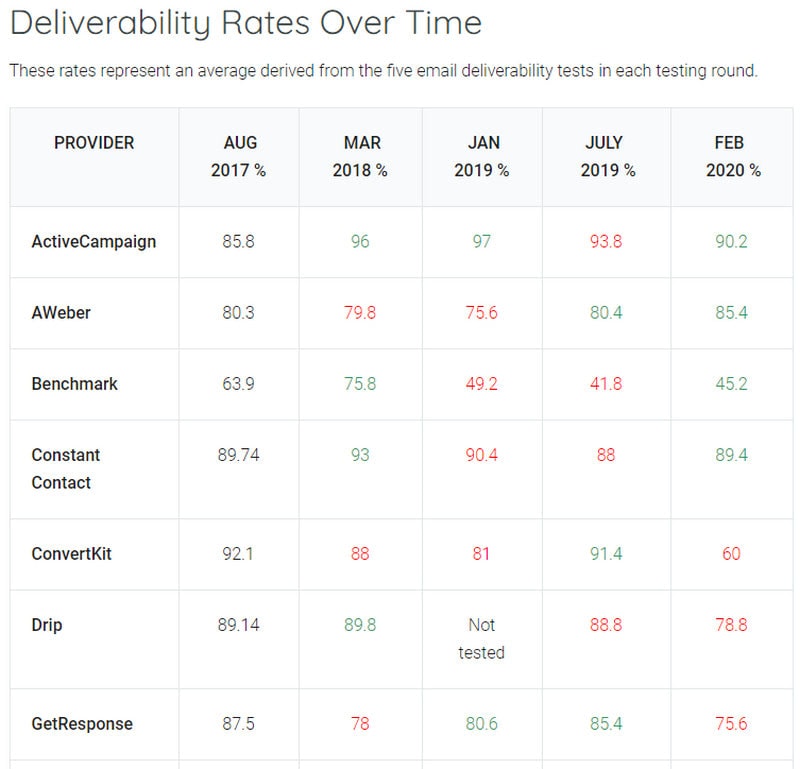
Main Reasons for Poor Email Deliverability
If you are experiencing a drop in open- and click-through rates, see an increase in bounce rate, or find out that you are blocked, these are the first signs that something is wrong with email deliverability. A number of factors can ruin it. There are four main aspects to watch for.
Reputation
Reputation is your karma that can improve or ruin your email marketing campaign. It is the core of a good email deliverability rate. Fewer complaints, no spam traps, no blacklists, few hard and soft bounces, and some other aspects build a strong email reputation.
Authentication
Important things as Sender Policy Framework, digital signatures, and email encryption (TLS) vouch for authenticity. Although all these measures may be challenging, they are worth the effort.
Infrastructure
Consider feedback loops, abuse reporting mails, mix records for the sender domain, and changing shared IP to the dedicated one. This area is not for newbies. But that does not mean that you cannot handle it. Much like with authentication, it takes some extra time and money but will pay off. It will help to thoroughly analyze the campaign and improve it from various sides, thereby increasing the email deliverability rate.
Content and design
URL shorteners, overused subject lines, and use of free email senders can ruin everything while relevant content, aesthetically pleasing design, responsive behavior, catchy subject lines, the perfect balance between images and text, alts for email readers with turned-off images can save the day. Together design and content play a crucial role. Of course, these two are not directly linked to the email deliverability rate, but they are responsible for high CTR that signalizes ISP that this email is valuable, and this sender is trustworthy.
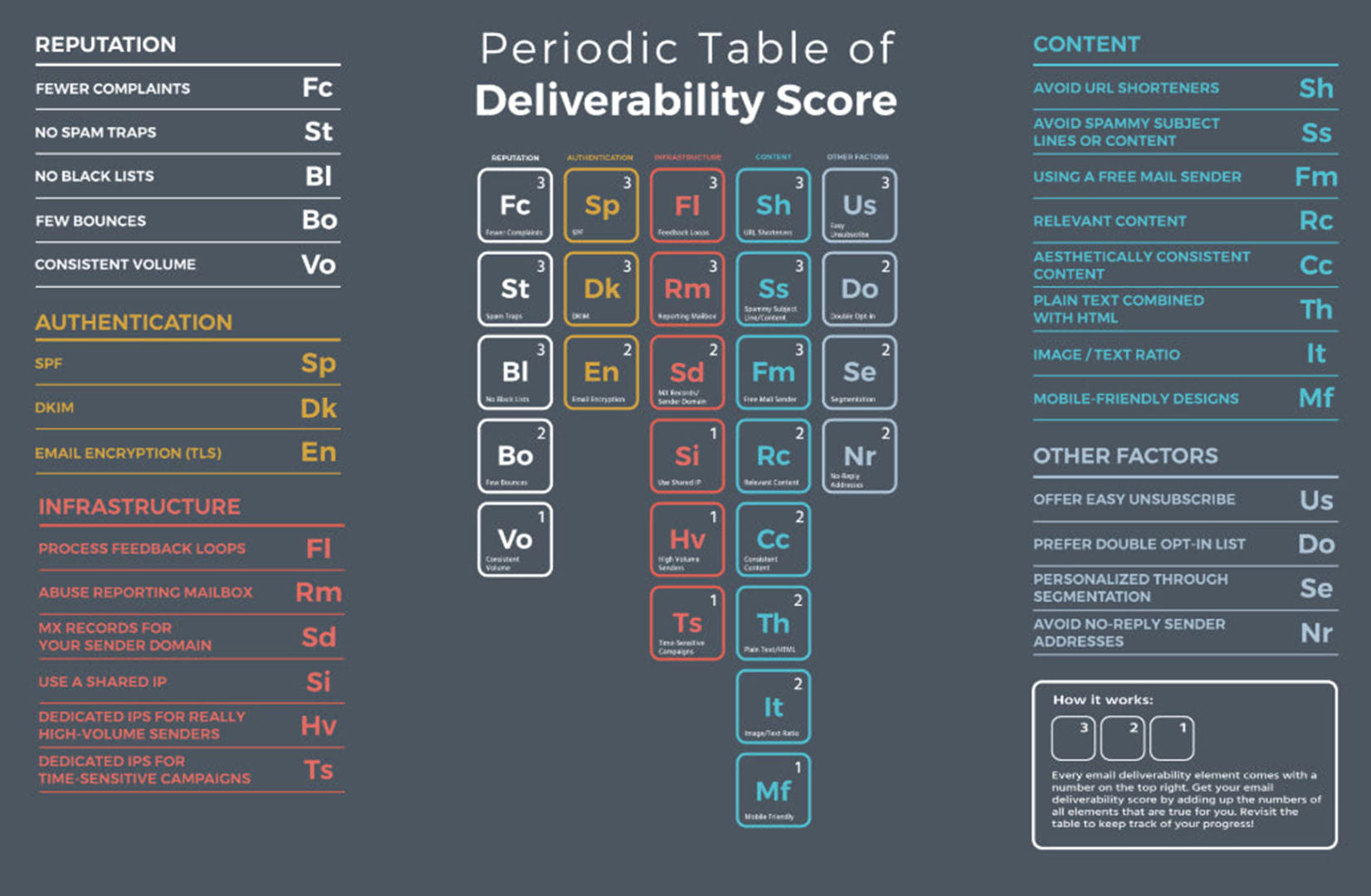
Deliverability Score
This quartet embraces essential issues. To sum up, the most common reasons for poor email deliverability are:
- High spam complaint rate.
- High hard and soft bounce rates.
- Low open rate. A low open rate damages your overall reputation. If subscribers are not interested and do not open your emails, then ISP may consider them spam.
- Negative sender reputation.
- Absence of custom authentication.
- Use of free email addresses that may be on the blacklists.
- Use of untrusted servers.
- Use of spammy subject lines.
- Frequent campaigns that may trigger spam filters.
- Mailing to unknown contacts.
- Being caught in spam traps.
- Switching between email providers too often. This behavior is considered bad by ISPs since all the spammers do this to hide their trails.
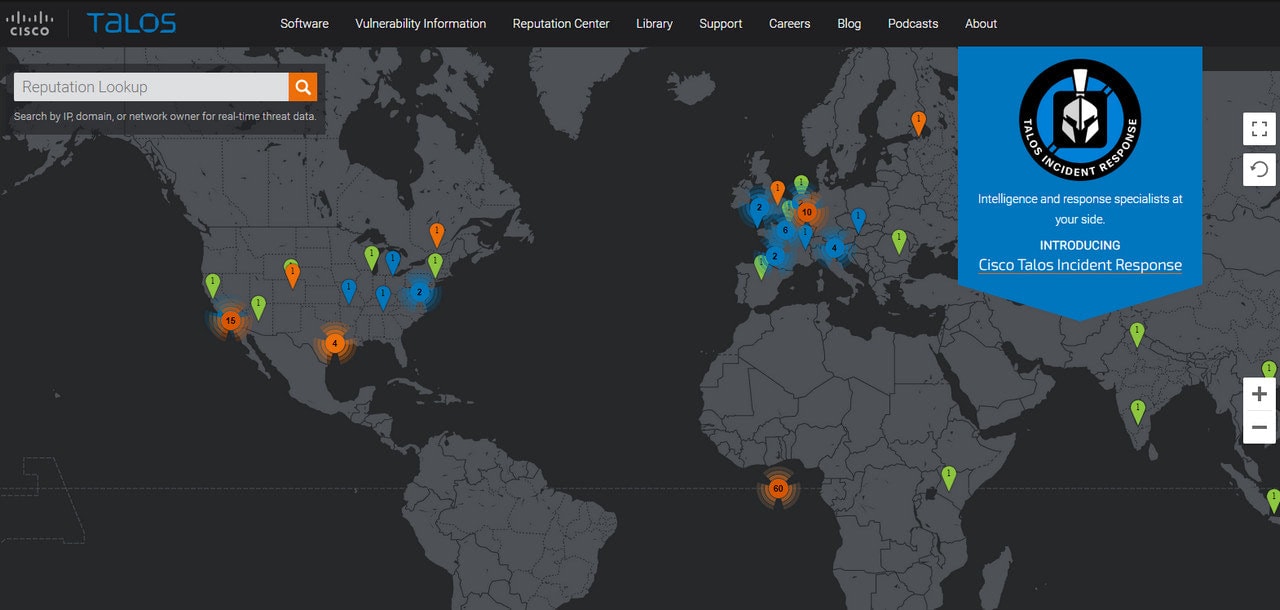
Cisco Talos Intelligence
Tips for Improving Email Deliverability Rate
A few ways that you can start to improve email deliverability rates:
- Polish your segmentation and send emails only to engaged users. This will help decrease the number of soft bounce rates that may lead to a good email deliverability rate and open rate.
- Clean your subscription list. Do this regularly in order to delete all email addresses that are broken, or non-existing. Also, remove inactive contacts or those who have not visited your website for more than six months.
- Improve your IP reputation. Make sure you use a trusted provider. Sometimes it is better to overpay for a premium or even exclusive offer rather than suffer from poor performance and bad karma of sender.
- Warm-up your IP address. Gradually increase the number of contacts. Do not use giveaways or similar stuff to gain contacts. Make this process natural. Start with sending a small portion of emails. Do not bombard subscribers with email every day. Once or twice a week is more than enough to draw attention toward your brand and, at the same time, not annoy people.
- Do not purchase an email list since you may end up in spam traps. Remember, getting off of a blacklist will be difficult.
- Use a double opt-in form to harvest engaged subscribers. Do not fall for easy and quick ways. Grow a healthy list and build an audience that is looking forward to receiving your email. This will help to eliminate the risks of being marked as spam.
- Run your IP address through blacklists. Do this regularly. There are many services where you can check it.
- Keep an eye on complaint feedback loops to sort out the issue on time and not suffer the consequences.
- Have an SPF in place. Use Sender Policy Framework to specify the server that has permission to send your emails. Not only will it tell ISP that you are trustworthy, but it will also help to prevent others from sending emails from your name.
- Have DKIM in place. This is one of the main factors that help spam filters to understand that you are not a fraud or an attack, digital signatures can do wonders.
- Encrypt your email. To avoid information disclosure and, at the same time, build trust with mailbox providers set up TLS.
- Use shared IPs with caution. If you have a small company, chances are you have a shared IP since dedicated IPs are a privilege of big companies with large lists. Therefore, use email service providers that can guarantee high quality and good reputation of their IPs.
- Monitor mailbox provider feedback loops to sort out complaints. Also, keep an eye on the abuse-reporting mailbox.
- Make the brand work for you. Use your company name in the “from” line. It will help to build credibility.
- Do not use a personal Gmail address. Gmail penalizes emails sent from its addresses outside of Gmail. Therefore, you risk spoiling your karma.
- Run your emails through pre-launch checklists to eliminate all the common mistakes.
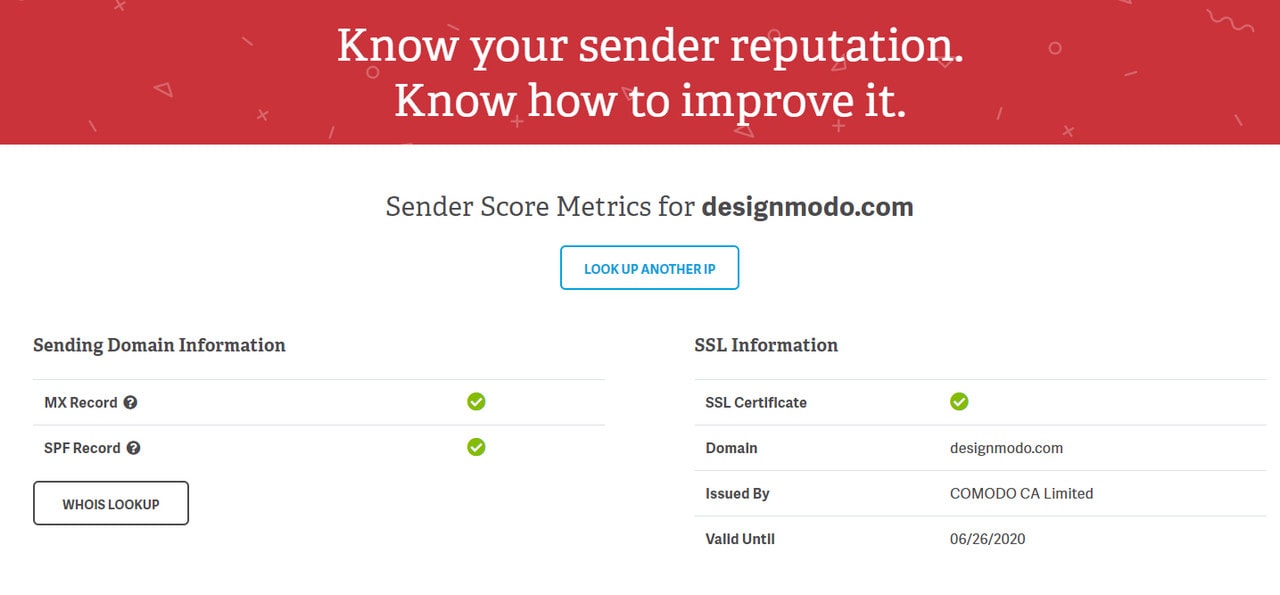
Tips for Improving Email Deliverability Rate with Design and Content
Along with all these pieces of advice, you need to refine the copy and design. Several helpful tips will help to avoid spam marks.
Do not use spammy words in the subject line
For instance, such a phrase as “FREE!!!” may guarantee you a place in a spam folder. However, it does not mean that you should never use it. Use it carefully. Put meaning inside the subject line. Make it fit the theme of the copy. You can use emojis and brand-specific features. Consider our list of subject lines for Black Friday and Cyber Monday campaigns to see how it should be done.
Provide subscribers with an easy way to unsubscribe
If something goes wrong and your contact does not want to receive any more emails, it is better to provide an option for unsubscribing rather than marking your email as spam.
Do not use URL shorteners
Spammers like link shorteners. Therefore they may be considered spam. What’s more, a masked link does not provide any information about its destination that may scare away prospects and, as a result, decrease the click-through rate.
Make the design responsive and mobile-friendly
It is vital to provide a consistent experience on all screen sizes. If users get a total mess instead of perfectly designed copy, they can easily reject it or, even worse, mark it as spam.
Therefore, make the design responsive and mobile-friendly. Use Postcards, an intuitive HTML email builder, for this task. Build newsletters with modern design and responsive behavior that will increase CTR and help your email deliverability rate.
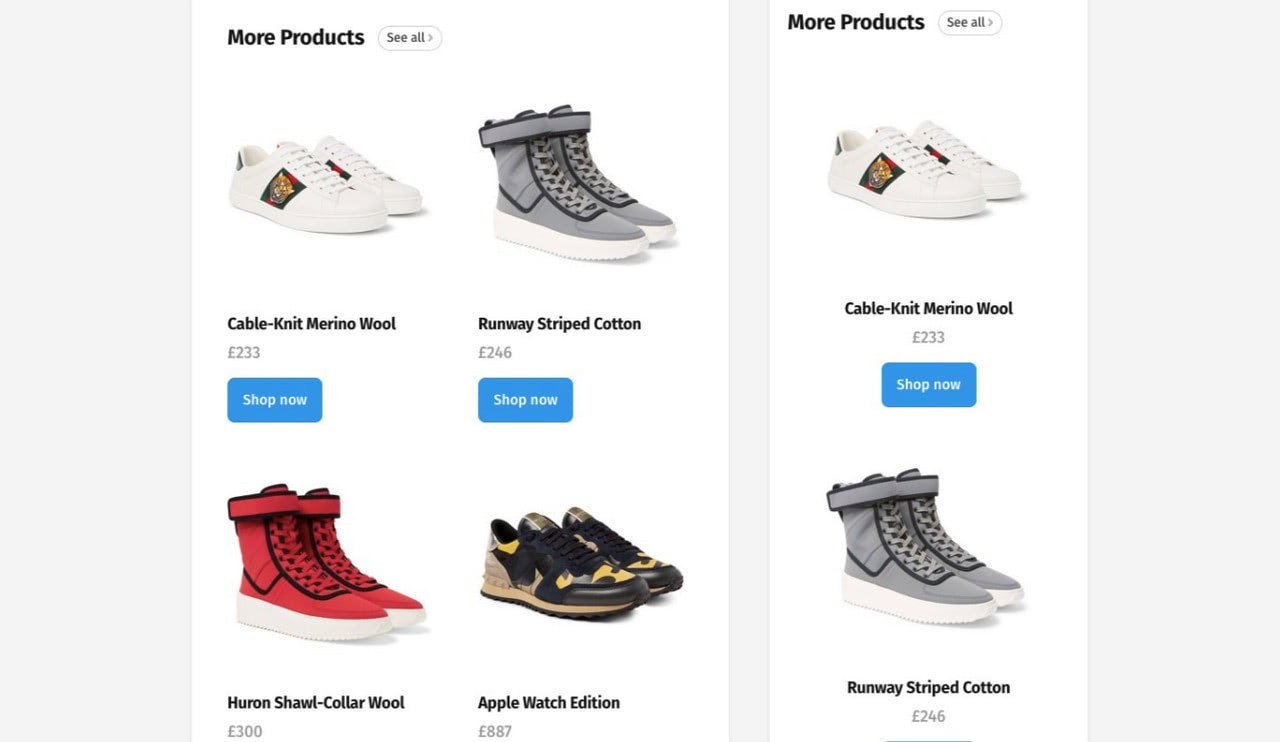
Postcards
Technical Elements of Improving Email Deliverability Rate
To avoid being impersonated by spammers, you need to embrace the technical side of the issue. It means you need to master DKIM, SPF, TLS, and Dedicated IP.
Dedicated IP
As we have already mentioned, dedicated IP is a privilege of big companies with large volume senders. The main advantage of dedicated IP over shared is that it has a better reputation. Therefore, the email deliverability rate is higher.
So what can you do? First, you can get a dedicated IP. Second, you can regularly check your shared IP to find out whether it is blacklisted or not. Finally, you can delegate this issue to email marketing software platforms that monitor their IPs and quickly sort out all the problems.
DKIM
DomainKeys Identified Mail, or DKIM, is a digital signature. It helps senders to associate a domain name with email. In other words, you can sign your newsletter with a signature that prevents hackers from impersonating you.
When you create a “signature,” MTA (mail transfer agent) creates a “hash value,” unique string of characters. After the recipient’s server receives your email, it will undergo verification. If something is wrong, then the email was altered, and it should be stopped. This way you may ensure that only newsletters sent from you will pass the first barrier.
SPF
Sender Policy Framework, aka SPF, is another powerful technical tool that protects your identity and emails from spam hackers. While DKIM uses a domain name, SPF leverages IP address to create a strong unique link between you and your email. In other words, it tells recipients’ servers what IP addresses are allowed to send emails from you. Again, it will ensure that only your email will meet the criteria.
Note, SPF and DKIM perfectly collaborate with each other. Together they may guarantee your authenticity.
TLS
Transport Layer Security, aka TLS, is one of the standard protocols for encrypting emails. Along with SSL and STARTTLS, it is used to secure the connection between the sender and recipient. Since only the server and client have the keys that are used for decryption, no one can intrude. Therefore, it is highly recommended to use it to add an extra level of security.
While all these terms may sound confusing, the good news is that if you are using a popular email marketing services, like Mailchimp. Chances are the platform has already done it for you. All you need to do is to configure some options. Therefore, do not neglect these tips. They can be easily put in action with the help of marketing automation platform bringing about high email deliverability rate.
Email Deliverability Tools
We have also compiled a list of necessary email deliverability tools so that you can monitor the situation.
Spam Testing
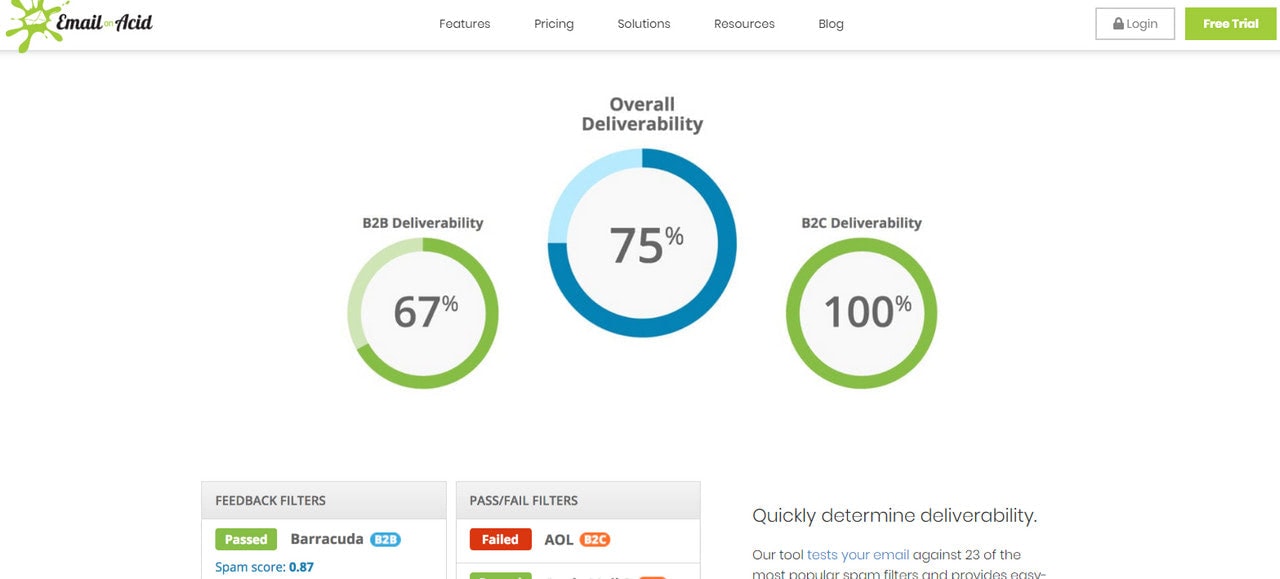
Spam Testing was created to check your email against spam filters. The test includes 23 popular filters to identify the email deliverability rate quite accurately. It also runs IP that you use through various blacklists so that you can find out whether you need to change the provider or not.
Spamhaus
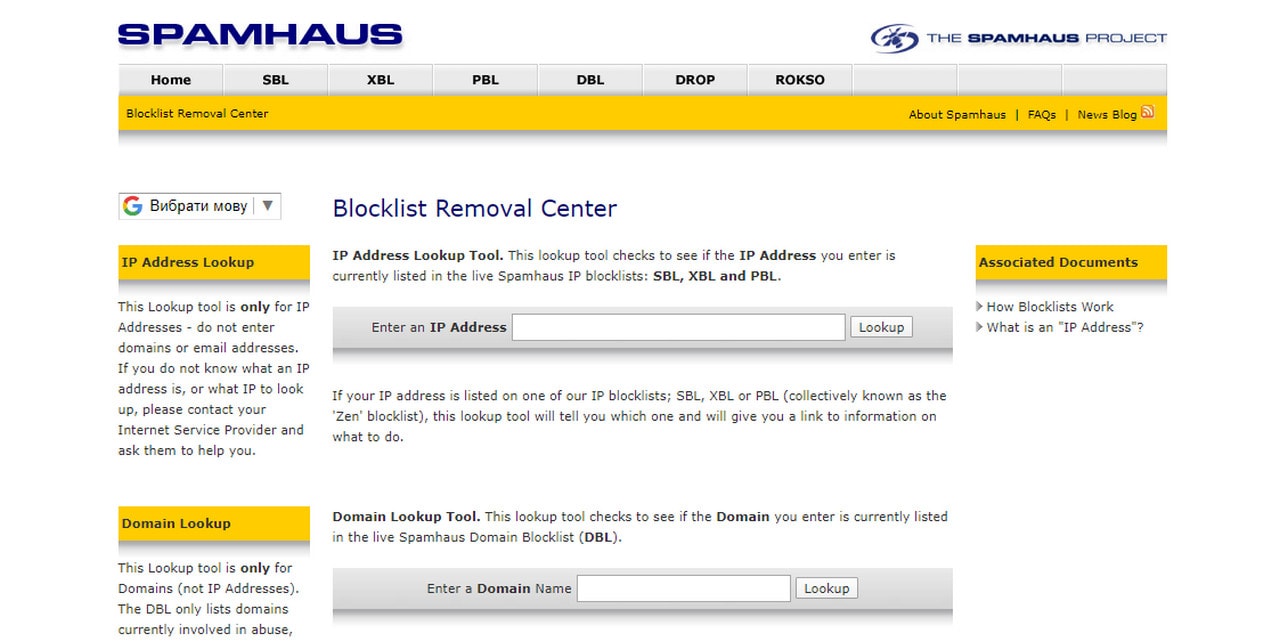
Spamhaus has a rich history. Established 20 years ago, it still occupies the leading position when it comes to testing your IP and Domain against blacklists. If your IP is listed on SBL, XBL, or PBL, or your domain is listed on DBL, you will know. Along with the report, the service supplies helpful instruction on how to get out of these lists and regain your email-sending karma.
Unspam.email
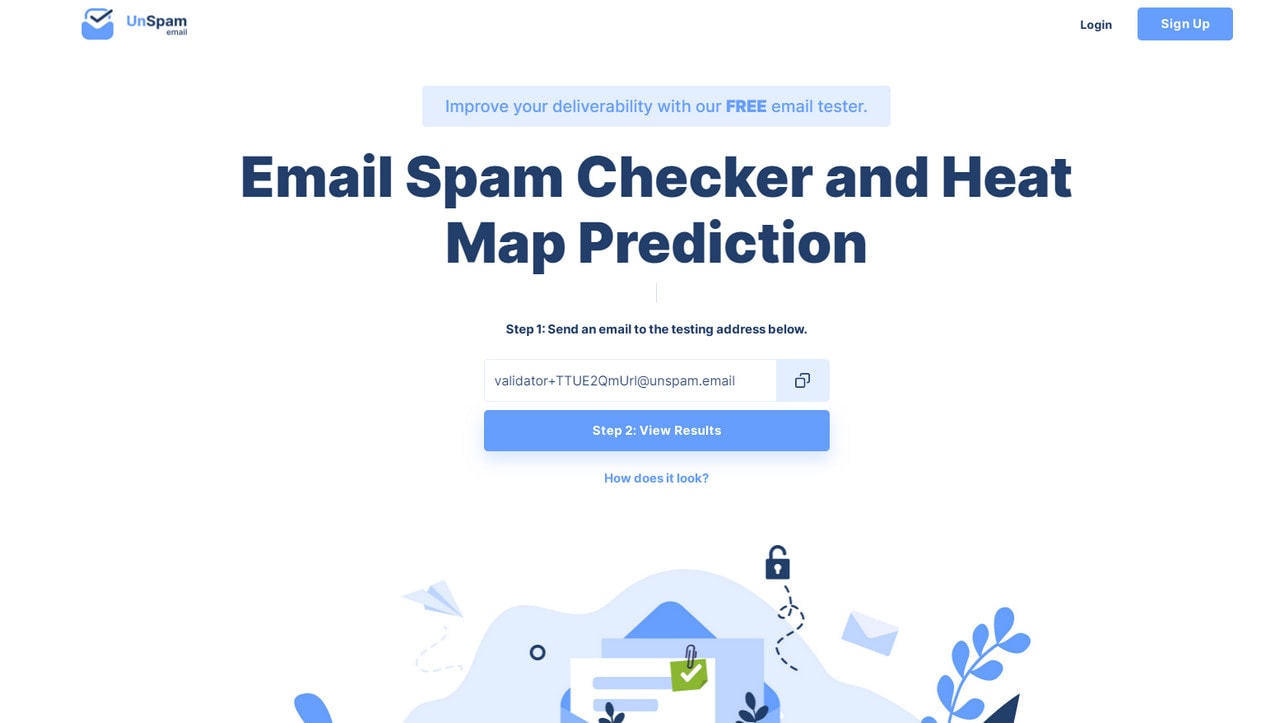
Although Unspam can’t boast of a 20-year history – it is a relevantly new service – nevertheless, its team is perfectly aware of what it takes to create an email design that meets all the current requirements. They have done a great job by providing a truly reliable and all-embracing platform for analyzing your emails. If you want to enjoy excellent deliverability and ensure the success of your campaign, then you should certainly give it a try.
Unspam comes with lots of helpful instruments.
- First and foremost, it has a thorough spam check with numerous parameters taken into account.
- Second, it inspects your email on accessibility that is increasingly vital.
- Third, it has an email preview where you can see your design across various popular devices, platforms, and operating systems.
- Fourth, it analyzes a copy for spam words, broken links, and bad resources.
- Finally, it makes a heat map prediction that lets you improve your design and structure to get better click-through rates.
Much like the previous example, this online instrument has been with us for ages. It shows a detailed report of what is wrong with your email and provider so that you can fix the situation before doing actual damage. In addition, the tool also has SPF and DKIMs check that, as we know, are vital for a good email deliverability rate.
Sender Score
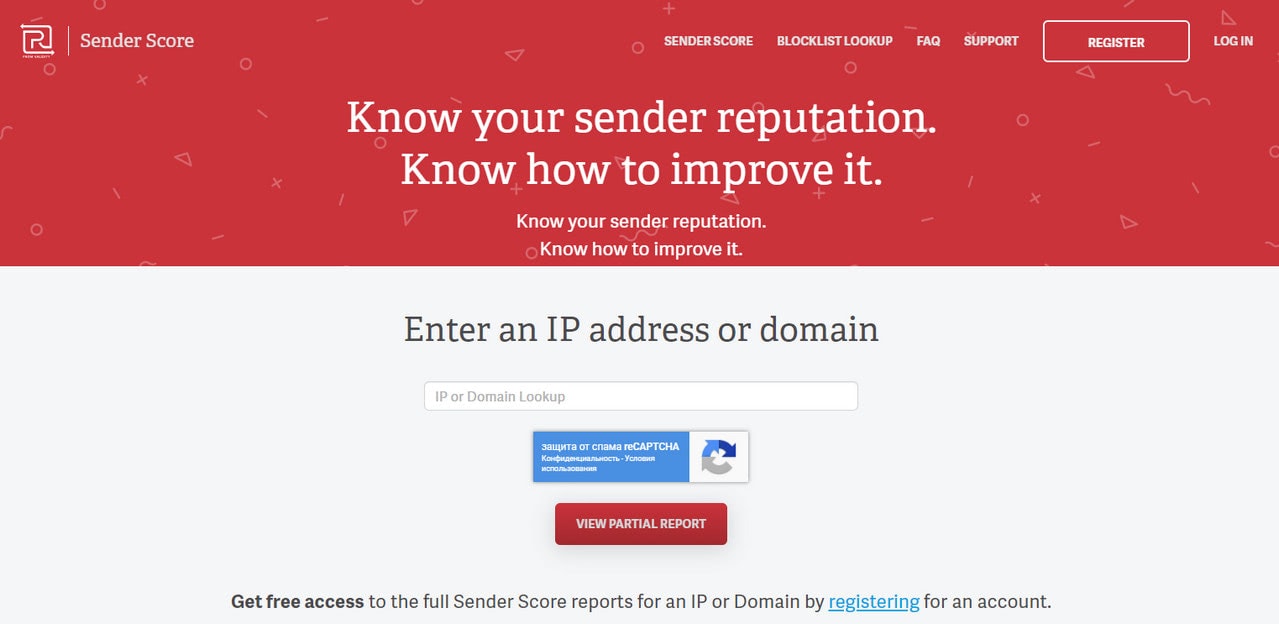
Sender Score measures the health of your sender. Taking into account such important factors as spam complaints and industry blacklists, it identifies the reputation. Based on the result, the tool offers some helpful solutions to improve the situation. What’s more, here you can also find the Blocklist Lookup tool to check whether your IP is on the blacklist.
Spam Testing tool by GlockApps
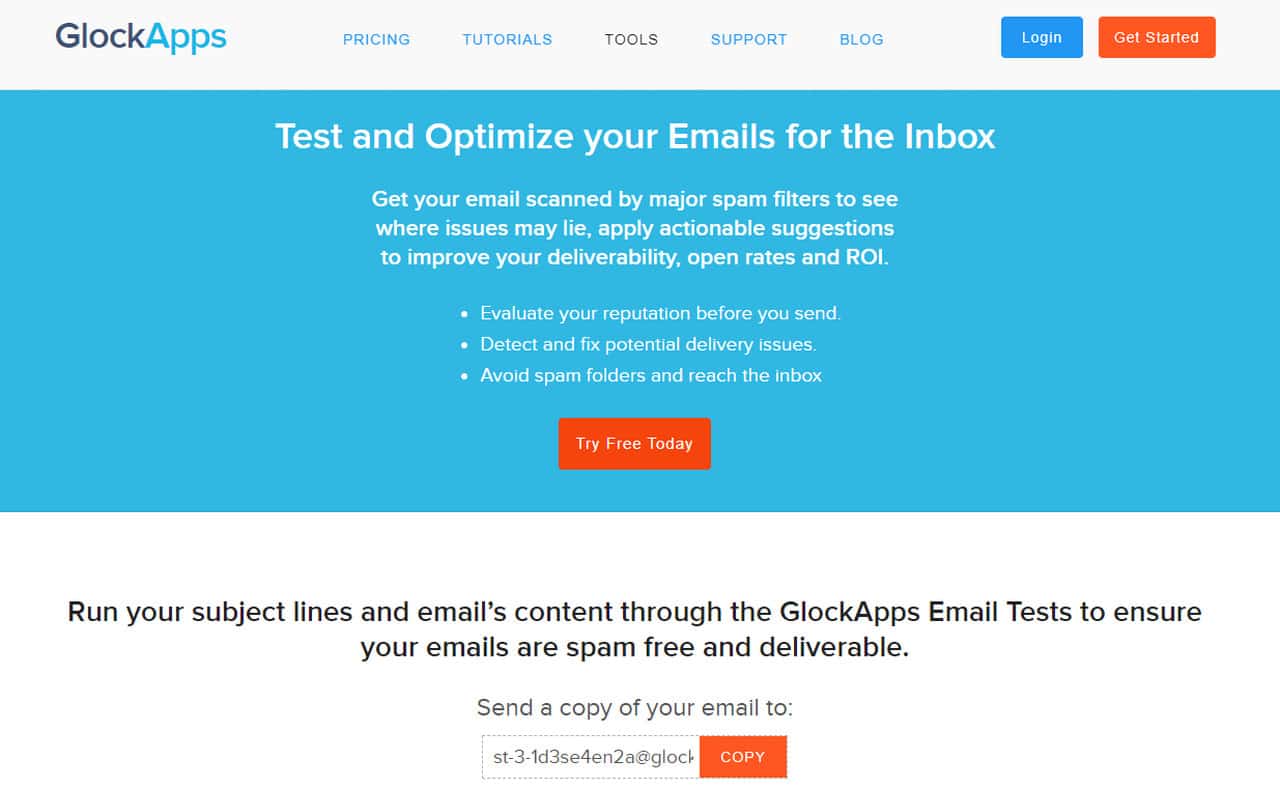
GlockApps offers a tool to scan email, identify risky content, track delivery duration, and more. It will calculate a sender’s reputation, detect potential delivery problems, and provide solutions on how to fix issues and avoid spam folders. All of these will help to improve the email deliverability rate and generate more sales.
MXToolbox
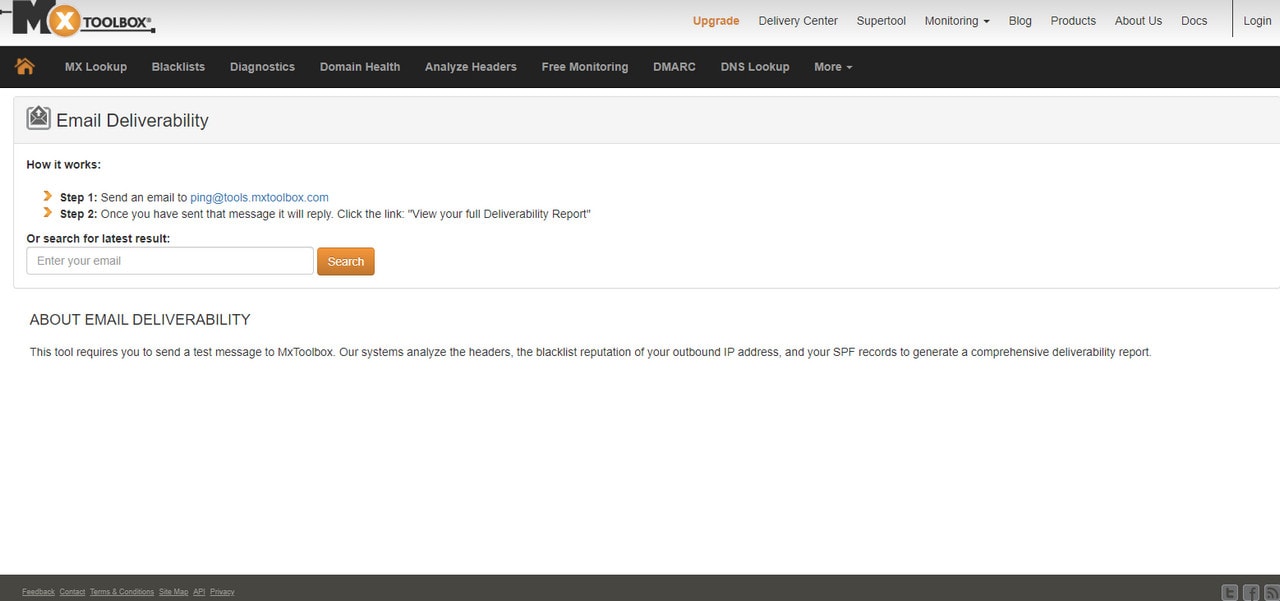
MXToolbox is one of the most powerful and helpful instruments on the web. It has a variety of tests: MX Blocklist Lookup, Diagnostics, Domain Health Check, Deliverability Check, Headers Analyzer, DNS Lookup, and more. It is a pure treasure for email marketers who want to improve not only the email deliverability rate but also the entire email marketing campaign. Free account allows you to monitor your email as well as get access to troubleshooting information.
Conclusion
Do your perfectly designed and polished email newsletters make it to the users’ inboxes? This is the first issue that should concern you while developing an email marketing campaign. If the email deliverability rate is low, then all your efforts of creating a high-converting email will be in vain. Without excellent email deliverability, you may forget about good open rates and conversion rates. Therefore, make sure it is as high as possible.
To do this, keep an eye on such vital things as sender reputation, authentication, blacklists, proper segmentation, healthy subscription list, non-spammy subject lines and content, responsive design, and just follow the best practices of email marketing and email design trends.



